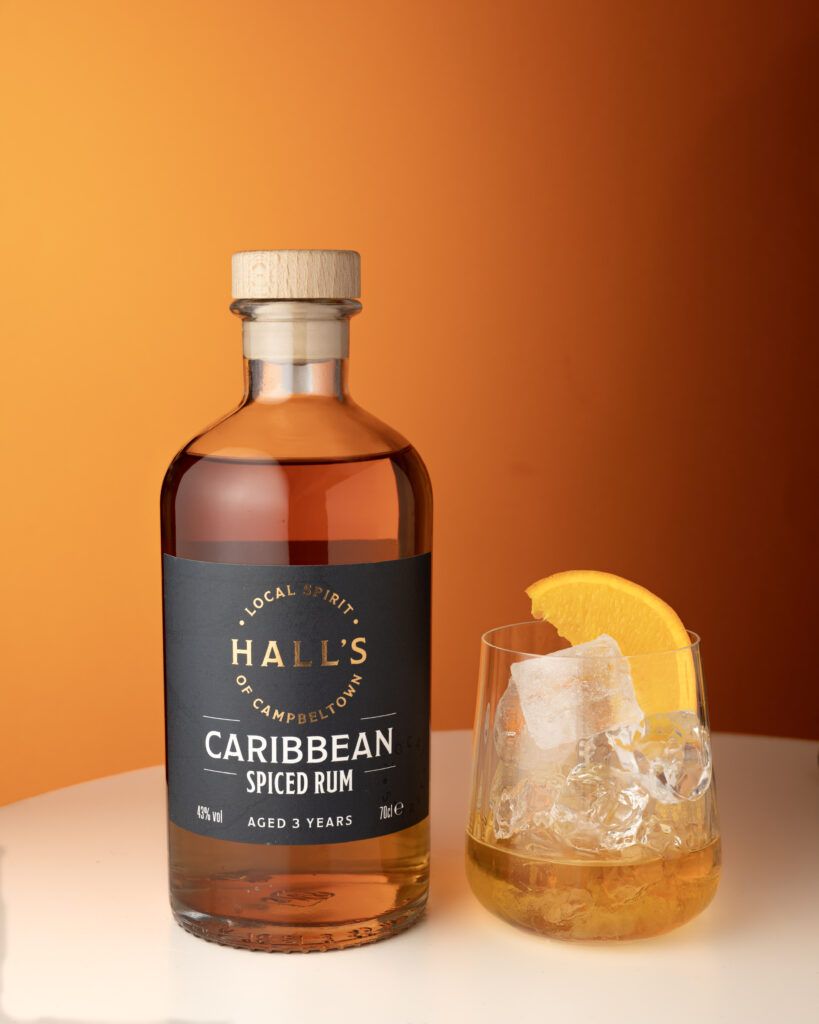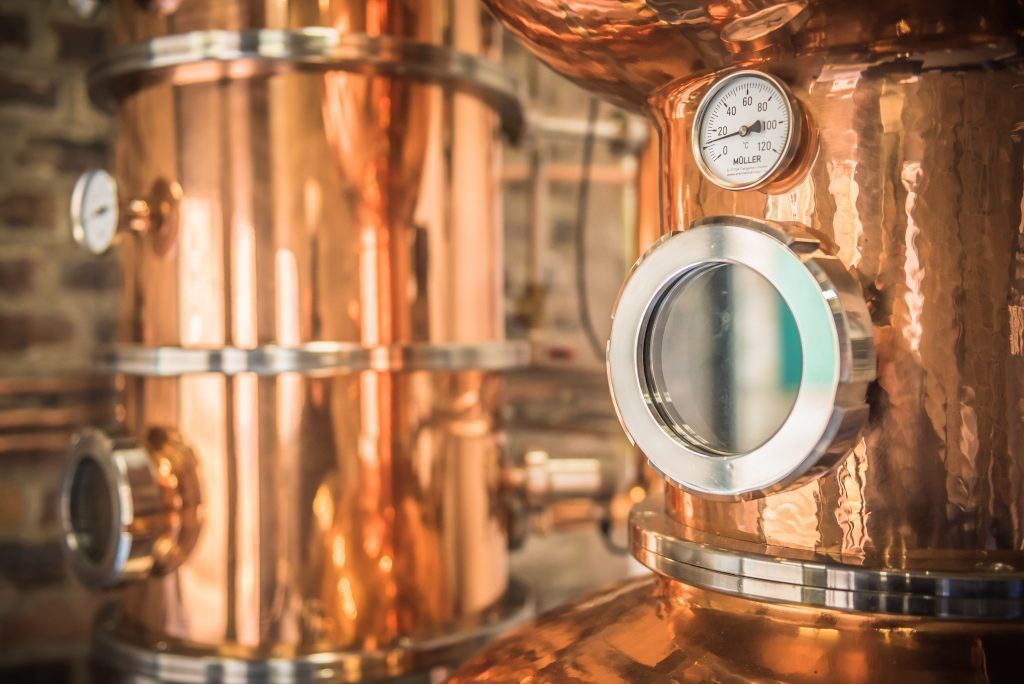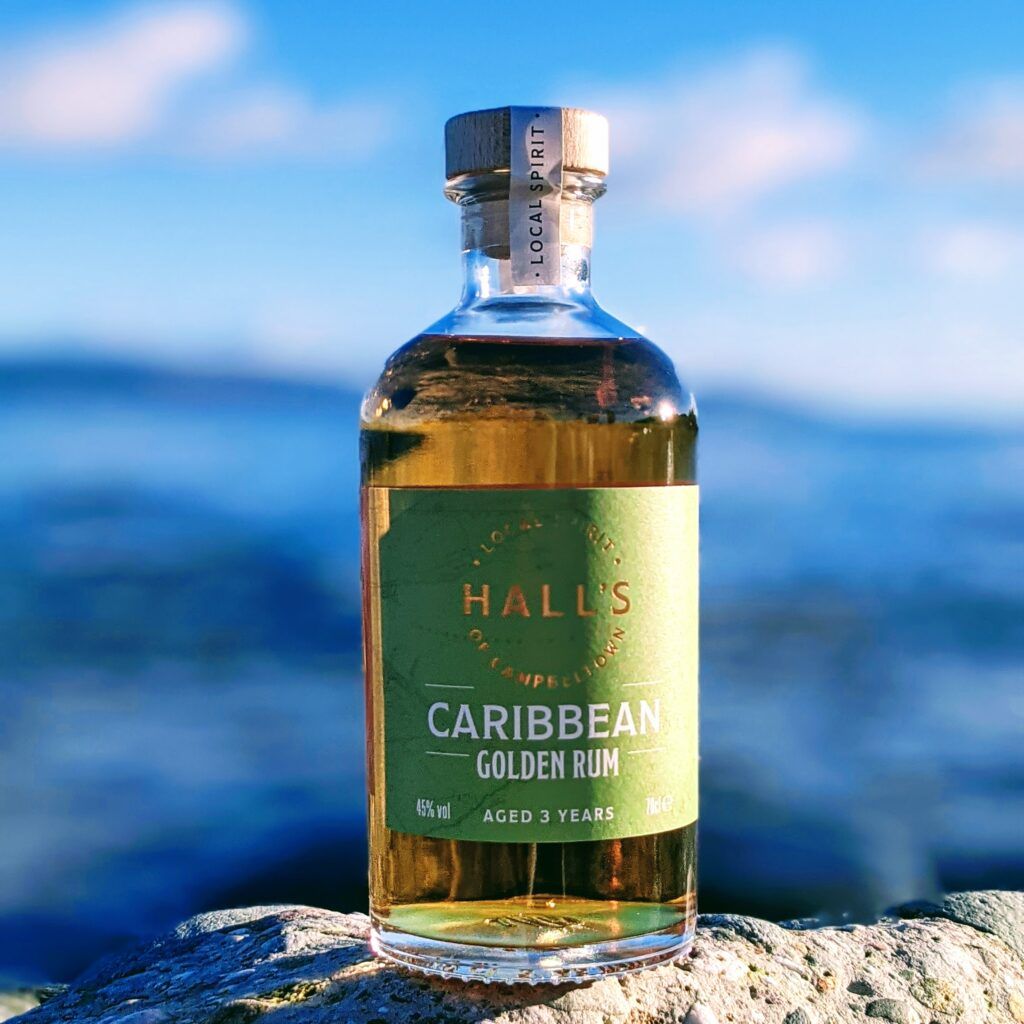If you’ve visited us recently or have been keeping an eye on our social media channels you may have heard rumours that we’ve been experimenting with a new product….RUM! We already import and bottle rum under our Hall’s of Campbeltown label, but we’re also in the early stages of making our own version of this delicious spirit from scratch.
As National Rum Day took place this week, we thought we’d write a wee introductory post about this glorious golden tipple.

History
Although in wide use by 1654, the origins of the name ‘rum’ are unclear and there are several theories as to how the name came about. Some historians believe that the word came from the Latin saccharum, meaning sugar whereas others think the word derived from ‘roemers,’ the large drinking glasses used by Dutch seaman, more commonly known as rummers. The most likely root seems to be ‘rumbullion’ or ‘rumbustion’ which were slang words used for ‘uproar’ or ‘tumult’.
The production of rum itself is widely believed to have originated in the Caribbean during the seventeenth century. Although some recent research has suggested that before it reached the Caribbean islands, rum and sugarcane were being produced in Brazil. Slaves working on the sugarcane plantations on the island of Barbados discovered that by fermenting molasses, a by-product of sugarcane, they could make an alcoholic substance. By distilling this, a purer and more intense spirit could be created.
Rum quickly gained popularity and spread throughout the American Colonies before reaching the States. The first official rum distillery was founded in New England, on Staten Island in 1664, and rapidly became a booming industry in the area – by the eighteenth century 80% of New England’s exports were rum and it even became an accepted currency in Europe for some time.
Yo Ho Ho! (and a bottle of rum)
Rum has long had a strong association with seafaring and pirates in particular. Since rum was such a popular export, it meant that a lot of ships were carrying this liquid gold as cargo, making themselves primary targets for pirates. Yet a pirate’s fondness for rum was not just because it made for good loot, it was also used to make the on-board water supplies safe to drink. Water was very hard to keep fresh on long voyages and so adding rum helped to preserve it and keep the crew happy and hydrated.
When the British captured the island of Jamaica in 1655, rum became widely available to the Royal Navy who changed their daily ration from French brandy to Caribbean rum. It was originally handed out neat or mixed with lime juice, to help prevent scurvy, but was then watered down in an attempt to help minimize the effects of excessive alcohol drinking on sailors. The practice of doling out a daily rum ration continued in the Royal Navy until it was banned in 1970.
Making
Rum is essentially made by fermenting and then distilling sugar cane molasses but production methods vary widely and different processes are used around the world.
The first step is to make a rum wash which is done by heating water to dissolve molasses and then bringing the temperature back down again. After watering down, the yeast is then added which feeds on the sugar content of the molasses, the mixture is aerated and then poured into a vat for fermentation. The wash needs to be fermented, to create the alcohol, which can take around 12-14 days to finish and will create a liquid of about 7-10% ABV.
The rum wash will contain some contents that we don’t want and need separating out which is where distillation comes in. Distilling the wash will remove the impurities and leave behind a drinkable solution. Once all the alcohol has evaporated, the remaining liquid is referred to as ‘dunder’ and can be used to increase the acidity and flavour of the next run.

If you’re producing ‘white’ rum, there’s no need to age but dark rum requires 6-18 months of aging. Rum is typically aged in wooden casks and both the type of cask and length of time it is left for will have significant effects on the final flavour profile. Since wood is breathable, the alcohol and water content of the rum will evaporate out of the barrel and it will allow oxygen back into the cask which will intermingle with the wood and the rum to create a complex taste.

We’re still in the very early stages of developing our own rum, but keep watching this space. Can’t wait that long? Try our Caribbean Golden Rum, bottled under the Hall’s of Campbeltown brand, or our Caribbean Spiced Rum which is spiced to our own recipe. Both are available in our shop and online.






